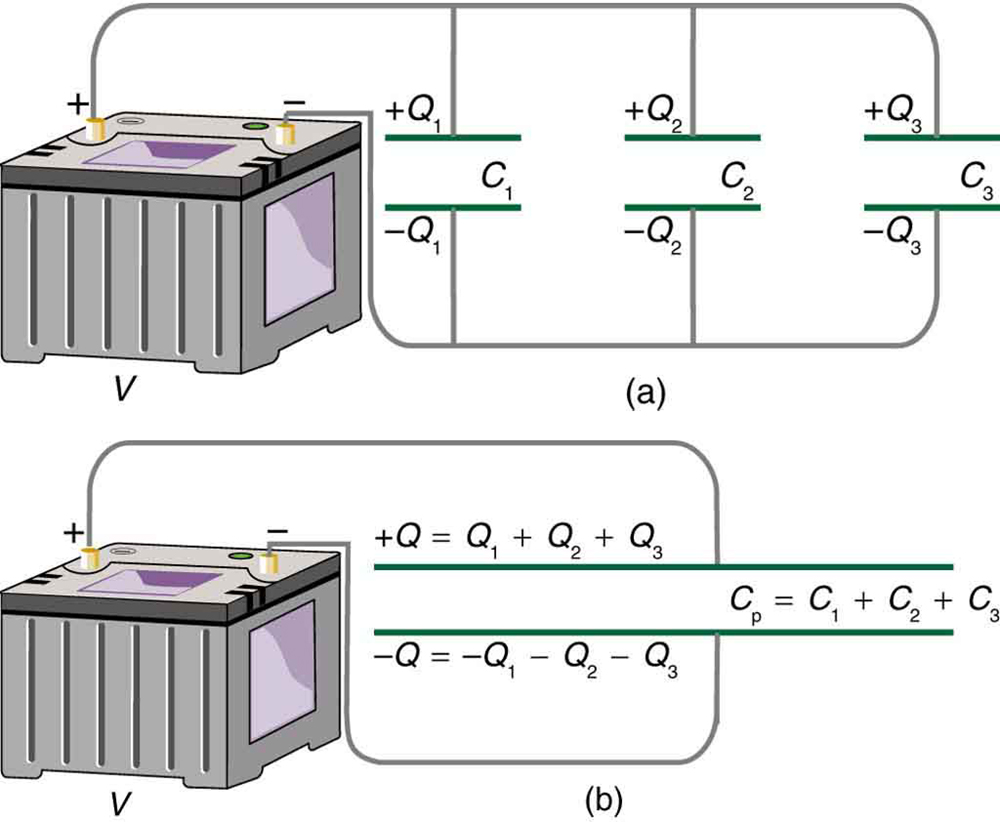The Relationship Between Capacitance, Voltage, and Size in Capacitors
Capacitors are essential electronic components, but their size relationships can seem counterintuitive at first. This article explores the key factors that determine capacitor size, including capacitance, voltage rating, and energy storage capability.
Capacitance and Charge Storage
Capacitance, measured in Farads, determines how much electric charge a capacitor can store. A 1 Farad capacitor can hold 1 Coulomb of charge when at a voltage of 1 Volt. Doubling the capacitance to 2 Farads doubles the amount of charge that can be stored. However, capacitance alone does not determine size - the voltage rating is also critical.

Voltage and Energy Storage
The energy a capacitor can store is determined by 1/2 CV^2, where C is the capacitance and V is the voltage. Doubling the voltage quadruples the energy storage, even if the capacitance stays the same. As a result, higher voltage ratings require thicker insulators and larger internal plates to safely contain the higher energies. A 20V capacitor needs to be over 13 times larger than a 5.5V capacitor with the same capacitance to avoid rupturing.
Rated Voltage Drives Size
While 1 Farad of capacitance may seem enormous, on its own it tells us little about a capacitor’s actual size. Mark Barton showed a 1 Farad 20V capacitor was roughly the size of a tennis ball can, whereas Kenneth Lundgren’s example of a 1 Farad 5.5V “supercap” was only about the size of a stack of coins. The rated voltage is the key driver of physical dimensions - higher voltages require more material and internal space to avoid rupturing from excessive energy densities.
Electrolytic vs Non-Electrolytic Construction
Electrolytic and non-electrolytic capacitor constructions also impact size differences for a given value. Electrolytic caps can achieve much higher capacitance-to-volume ratios through an oxide layer dielectric and etched or wound aluminum foil plates. However, their polarized nature means only one orientation of connection is valid. Non-electrolytic types like ceramics are smaller given the same capacitance-voltage specs due to less plate area gain from winding or etching.
Applications Depend on Capacitance-Voltage Products
While simple nominal capacitance values are rated, most applications care more about the capacitance-voltage product (CV product) that determines energy storage capability. Low ESR electrolytics excel for bulk energy buffering thanks to this high CV, useful for applications like flash lighting or UPS batteries. Non-electrolytics with much lower equivalent series resistance (ESR) are better suited to high-ripple current bypassing. Understanding these distinctions is key to selecting the right capacitor type and value.
Size Also Reflects Reliability and Safety Margins
Capacitor manufacturers carefully consider size not just to meet CV and voltage ratings, but also to incorporate reliability and safety margins. Larger clearances between internal components, more stringent dielectric breakdown tests, and thicker insulating materials are common to ensure rated lifetimes and avoid dangerous failures like explosions from overvoltage or temperature stresses. The sizing therefore reflects real-world operating conditions more so than bare minimum specs. In summary, a capacitor’s physical dimensions are determined far more by its rated voltage than its nominal capacitance value alone. Higher voltages drive much larger sizes through their impact on energy density and dielectric strengths. Capacitance-voltage products and construction methods also shape typical applications and size ranges for different capacitor types. Proper component selection requires considering these interdependent specifications, not just simple face values.
Beyond Single Capacitor Considerations
For applications involving capacitor banks or arrays, additional factors come into play. Given the same net CV requirement, using fewer higher voltage capacitors may allow more compact designs than many low voltage units connected in parallel since each individual unit needs less insulation for safety. Temperature rise from dielectric and ohmic losses must also be assessed, favoring designs with better heat spreading over larger surface areas. And of course, any redundant units for fault tolerance will further increase overall volume. System-level optimization requires evaluating tradeoffs between part count and ratings.
Reliable Modeling Replicates Real Components
For engineering simulations and prototypes where using physical capacitors is impractical, software models must accurately replicate dimensional attributes implied by specs. Larger ESL parameters, appropriate volumetric affects on thermal properties, and failure behavior emulating insulation breakdown limitations are examples of factors to consider. Merely lumping all energy storage into a simple ideal capacitor component risks overlooking safety issues uncovered during prototyping. The correlations between specification parameters and real component sizing must be respected in simulations for reliable results. In conclusion, the size of a capacitor is not solely determined by its basic rated capacitance. The voltage rating is equally or more important in establishing physical dimensions, due to the capacitor’s need to safely contain the energy density implied by the capacitance-voltage product. Non-ideal factors like construction, applications, reliability, and system-level optimization further influence typical sizes. A full understanding of specification interdependencies is required for choosing capacitors and modeling them properly.
Standardization Streamlines Selection
With so many specifications involved, selecting the right capacitor type and value for a given application can quickly become complex and error-prone. Thankfully, industry standardization helps by pre-defining common capacitor combinations optimized for typical uses. For example, Rubycon’s “PME” series offers a wide selection of through-hole electrolytics within standardized case sizes, facilitating quick selection of the precise CV needed. Such predefined product families save engineering time over custom designing from first principles each time. Standardization is invaluable for streamlining capacitor component selection.
In summary, the relationships between a capacitor’s specifications can seem counterintuitive at first glance. However, with an understanding of how capacitance, voltage rating, construction methods, energy storage principles, applications needs, and reliability factors all interconnect to determine appropriate size, selecting the right capacitor component for any circuit or system becomes straightforward. Industry standards further aid the selection process. Armed with this insight, designers can efficiently choose capacitors with confidence in meeting their project’s requirements.
